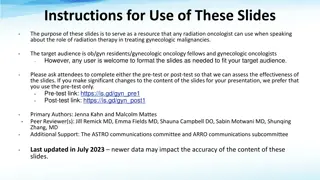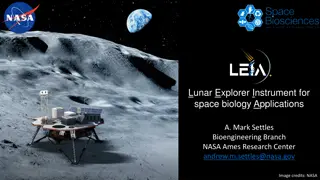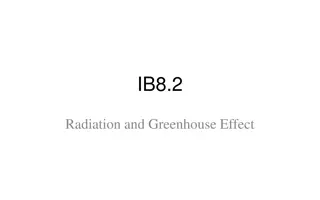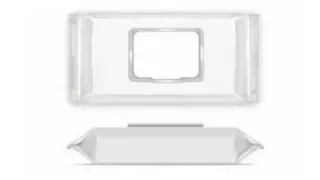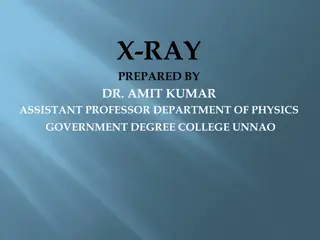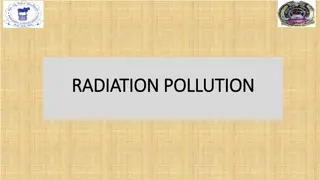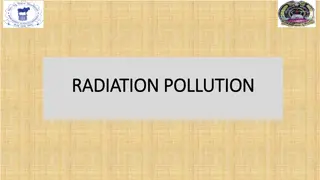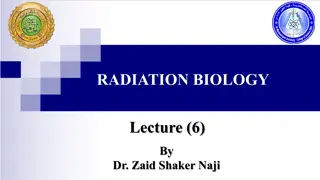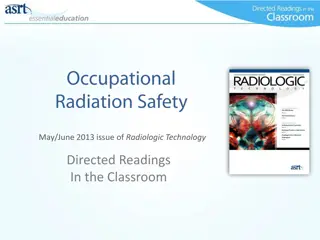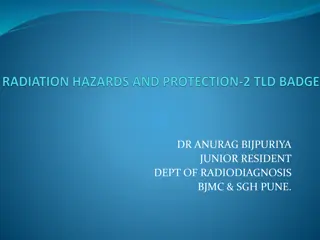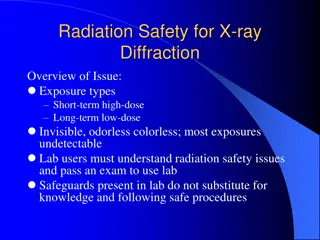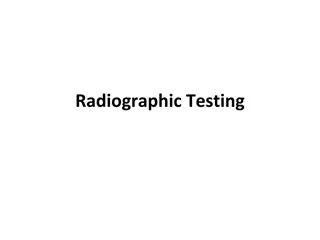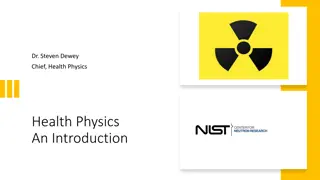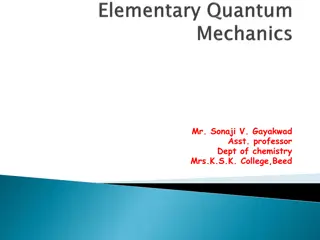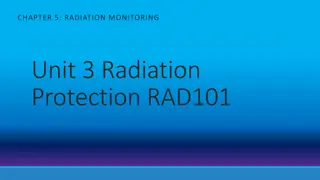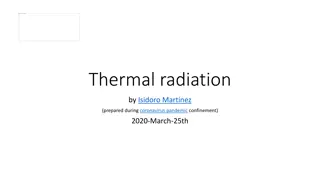Comprehensive Guide for Wipe Testing in Radiation Safety Programs
This guide provides detailed instructions for conducting wipe testing to detect radioactive material contamination in educational, research, and healthcare settings. It covers the purpose of wipe tests, UTHealth requirements, contamination surveys, safety resources, and more to ensure a safe environment for all individuals involved.
Download Presentation

Please find below an Image/Link to download the presentation.
The content on the website is provided AS IS for your information and personal use only. It may not be sold, licensed, or shared on other websites without obtaining consent from the author.If you encounter any issues during the download, it is possible that the publisher has removed the file from their server.
You are allowed to download the files provided on this website for personal or commercial use, subject to the condition that they are used lawfully. All files are the property of their respective owners.
The content on the website is provided AS IS for your information and personal use only. It may not be sold, licensed, or shared on other websites without obtaining consent from the author.
E N D
Presentation Transcript
Instructions for Wipe Testing for Radioactive Material Contamination Radiation Safety Program Environmental Health & Safety 713-500-5840
Outline of Instructions Purpose of Wipe Tests UTHealth Wipe Test Requirements Wipe Test Materials Appropriate Lab Attire UTHealth Radiation Safety Forms Instructions for Wipe Tests How to Clean a Contaminated Area Safety Resources on the Web Summary
Purpose of Wipe Tests for Radioactive Material Contamination To ensure that education, research, and health-care related activities take place in conditions that are optimally safe and healthy for students, faculty, staff, visitors, surrounding community, and general public.
UTHealth Wipe Test Requirements Any Room Authorized to Work with Radioactive Materials Must at Least Document monthly wipes where used, stored and selected clean areas If storage only, monthly wipe test of storage location If no use AND no storage, monthly statement indicating no radioactive material used or stored for XXX month Additional requirements may occur for researchers working with greater than 5 mCi Urine bioassay and more frequent surveys
Contamination Survey For the protection of the researchers and all workers in the lab, a contamination survey should be performed at the end of each experiment or project. Proper documentation requires written survey results at least monthly Can be performed with a Geiger-Mueller detector Simple check to make sure there is no contamination in the lab that may have resulted from the radiation work
Safety Resources on the Web www.uth.edu safety
Radiation Safety Requirements Upon Receipt of Radioactive Material Documented monthly lab wipe tests Wear proper attire Lab coat Eye protection Gloves Gather equipment Cotton swab, filter paper, or paper towel Vial or Envelope
Wipe Test Procedure Use cotton swab to take several samples from different areas within the lab At least one wipe in storage area If no use or storage in month, document as no use or storage in XXX month Place samples in separate vial or envelope Label each vial or envelope noting the location of the sample Fill out Laboratory Wipe Test Report
Collecting the Sample Take samples using a S motion while rotating the cotton swab. Also shown, collecting a sample using a chem wipe.
Collecting the Sample Cut stick of cotton swab down to fit inside vial and close vial with lid.
Preparing the Samples Samples are placed individually in separate eppendorf tubes and 1 mL of cocktail or enough cocktail to cover the sample is added A blank Eppendorf tube is prepared in the same manner that will serve as the background sample Take out cotton swab and place in tube Fill tube with approximately 1 ml of cocktail and close tube
Loading the Samples Place tubes into vial holders Insert tubes into LSC racks Load racks into the Liquid Scintillation Counter (LSC) and flag the samples for counting by moving tab. Example for loading the LSC: Slide the tab located on the rack to the position where the color is not showing. This tells the LSC that the sample has not been read. When the tab is in the opposite position it signals to the user and LSC that the sample has been read.
Loading the Samples Place closed tube into vial holder Tab position indicates vials to be read. Tab position indicates vials will not be read. Load rack into LSC to run wipe test
Filling out the Report Fill out all necessary information Authorized user Date Building and Room number Wipe tested by Draw and label laboratory diagram in space provided
How to know if there is contamination? Wipe test results show counts in excess of three times the background count. Contaminated area should be documented and cleaned, then re-wiped to verify area now clean. Channels on the LSC should be set to maximum beta energy for isotope(s) of interest If upon running a wipe test a channel produces high value counts, then based upon that channel one can determine what isotope is the contaminating factor
Quick Contamination Calculation A rule of thumb for determining if the area is contaminated is if the sample CPM is greater than three (3) times that of the background Contaminated area > (3)*(Background)
If Area is Contaminated Take proper precautions IF MINOR Spill or Contaminated Area Clean the affected area per proper lab cleanup procedures IF MAJOR Spill or Contaminated Area- Secure the area, prevent re-entry Contact Radiation Safety for Assistance 713-500-5840 During Business Hours 713-500-4357 After Hours (500-HELP) UT Police
How to Clean Up Contamination Ensure that spill is contained Limit traffic where event occurred. Prevent runoff (from table to floor or spreading on table). Inform coworkers and lab manager. Call Radiation Safety! (713) 500-5840
How to Clean Up Contamination Obtain necessary supplies for cleanup Paper towels or diapers RADCON or Scrubbing Bubbles (DOW) Opaque plastic bags for waste. Labels Gloves
How to Clean Up Contamination Ensure that contamination is contained
How to Clean Up Contamination Spray area with RADCON or Scrubbing Bubbles (DOW) to lift contamination from the surface
How to Clean Up a Contamination Wipe from the outside in so not to spread the contamination
How to Clean Up a Contamination Dispose waste in a proper waste container or in a black bag with proper labeling
Review Documented Monthly Wipe Tests for Radioactive Material Contamination are Required A Radioactive Spill or Contaminated Area Should be Decontaminated (Cleaned) and Wipe Tested Again For Assistance, You can Contact Radiation Safety at 713-500-5840


